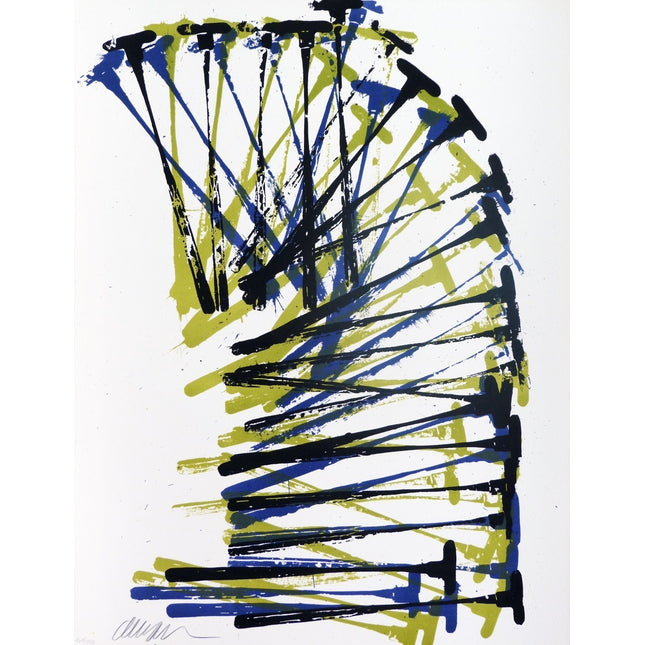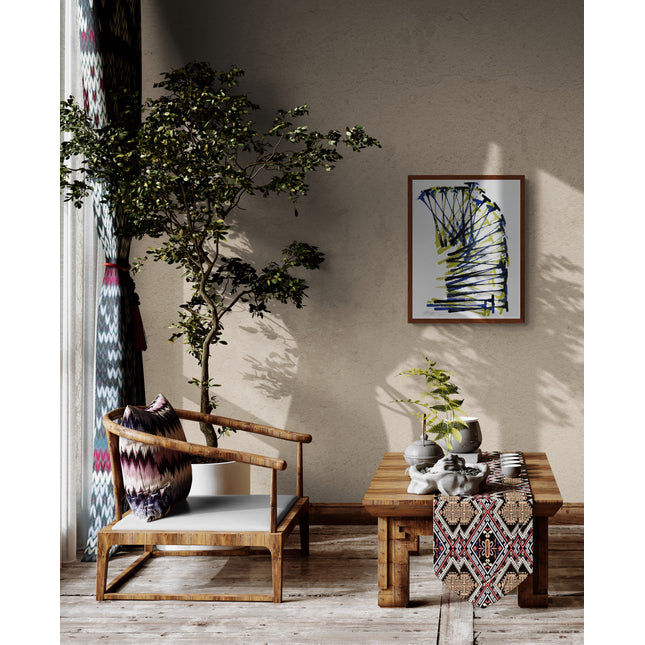Armand Pierre Fernandez was born in Nice, France on November 17 of 1928. His father, Antonio Fernandez, was antiquarian and amateur painter; he taught him the basis of photography and how to work with oil painting. In 1946 he began his artistic studies at the École Nationale des Arts Décoratifs in his hometown. At the same time, Arman attended judo lessons in which he met Yves Klein and Claude Pascal. In 1949 he moved to Paris to study archaeology and oriental art at the École du Louvre.
Although in his beginnings Arman showed great interest in abstract art, his main reference and source of inspiration was the Dadaist Kurt Schwitters. This artist would mark a style that was characterized by "accumulating" equal objects. In 1958 he had his first solo exhibition at the Paris gallery Isis Clert where he showed what Arman called his "Cachets". These were stamps and pasted pieces of fabric forming an ensemble. His artistic name Arman (coming from his first name Armand) is a nod to painter Vincent Van Gogh, who always signed his works as Vincent.
In 1960 Arman signed the first manifesto of the "new realists" group along with other French artists such as Yves Klein, François Dufrêne, Raymond Hains, Martial Raysse, Daniel Spoerri, Jean Tinguely and Jacques Villeglé and critic and philosopher Pierre Restany. One year later this group would be joined by other artists of the time such as César, Mimmo Rotella and Christo.
By this time Arman had a very particular vision of art. He developed two types of creations that became two key concepts of the artist's work: ”accumulations” and "poubelle" (French for garbage can). Accumulations consist of collections of identical objects blended with polyester or acrylic stored in Plexiglas cases, while "poubelle" is the collection of debris scattered over a space.
In 1961 he moved to the United States and established his residence in New York. There, Arman starts working on three new concepts. The "coupes" which consisted in slicing objects and then mount them back onto a sample holder, the "colères" smashed handmade objects and then rebuilt on wood panels and "combustions", objects burned whose remains formed the work. With these compositions Arman took a 180 degree turn to artistic creation through destruction.
As time went on in his studio in New York, over the years, Arman was increasingly "accumulating" disparate objects from jewellery to watches, or utensils. Arman was commissioned by The Renault car factory to build a sculpture for the Osaka Fair in 1970, which would consist in the accumulation of various car parts. Some of these sculptures were only a few centimetres tall, some several meters in height.
Arman obtained the American citizenship in 1973, stating in his identity card Armand P. Arman.
The most important sculptures based on these accumulations of Arman's work can be seen in “Long Term Parking”, which is located in the French Château de Montcel and was completed in 1982. It consists in the superposition of up to 60 cars assembled with concrete and measures 18 meters high. Later in 1995, Arman was commissioned by the Lebanese government to create a sculpture to commemorate the 50th anniversary of military service in the country. This work, entitled “Hope for Peace”, Arman surpassed its record high. This is a collection of tanks and army vehicles pasted with concrete whose canyons point to the outside of the work, which grows up to 32 feet tall.
Arman died in 2003 in New York, but his ashes are buried in Paris.










